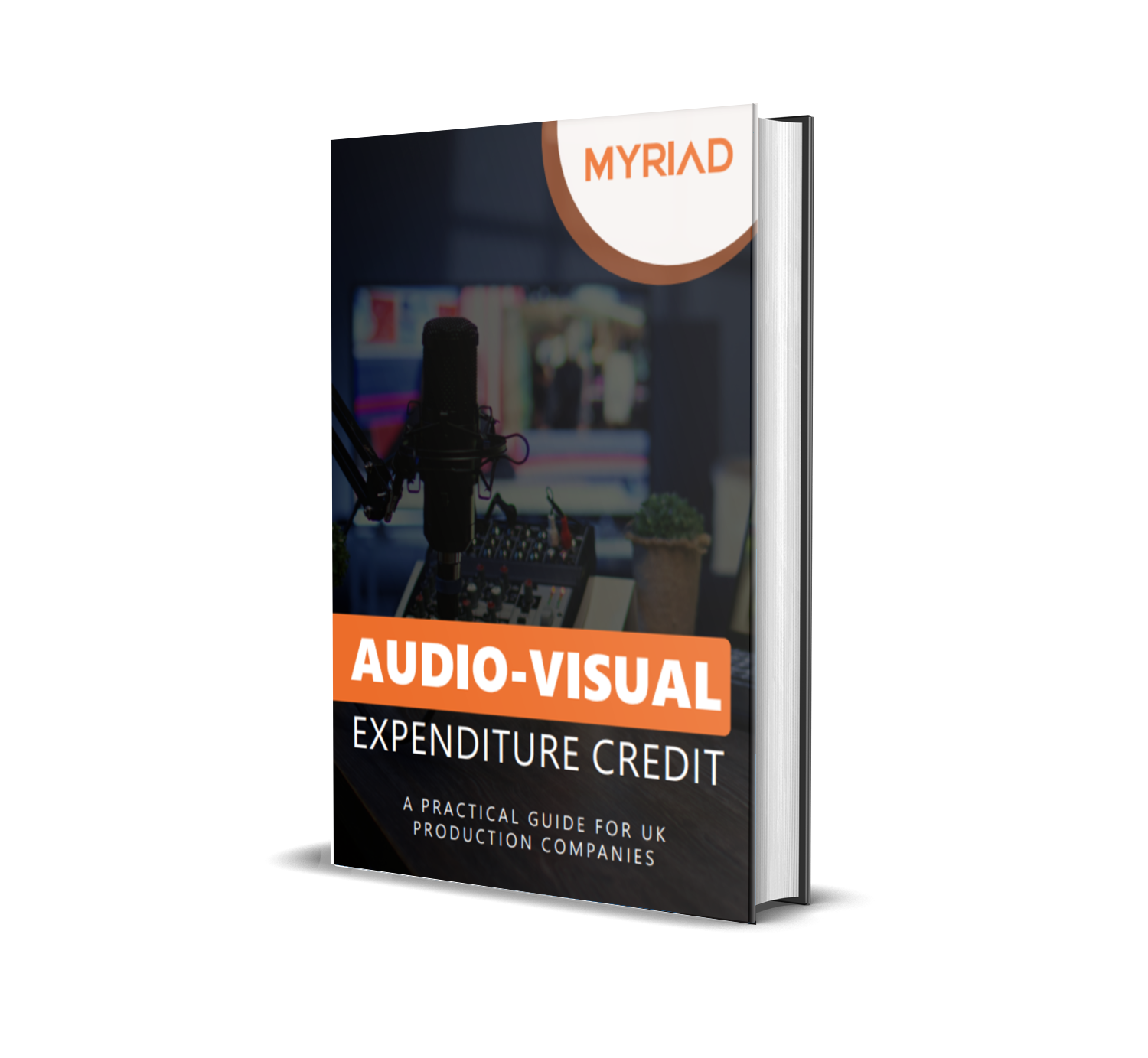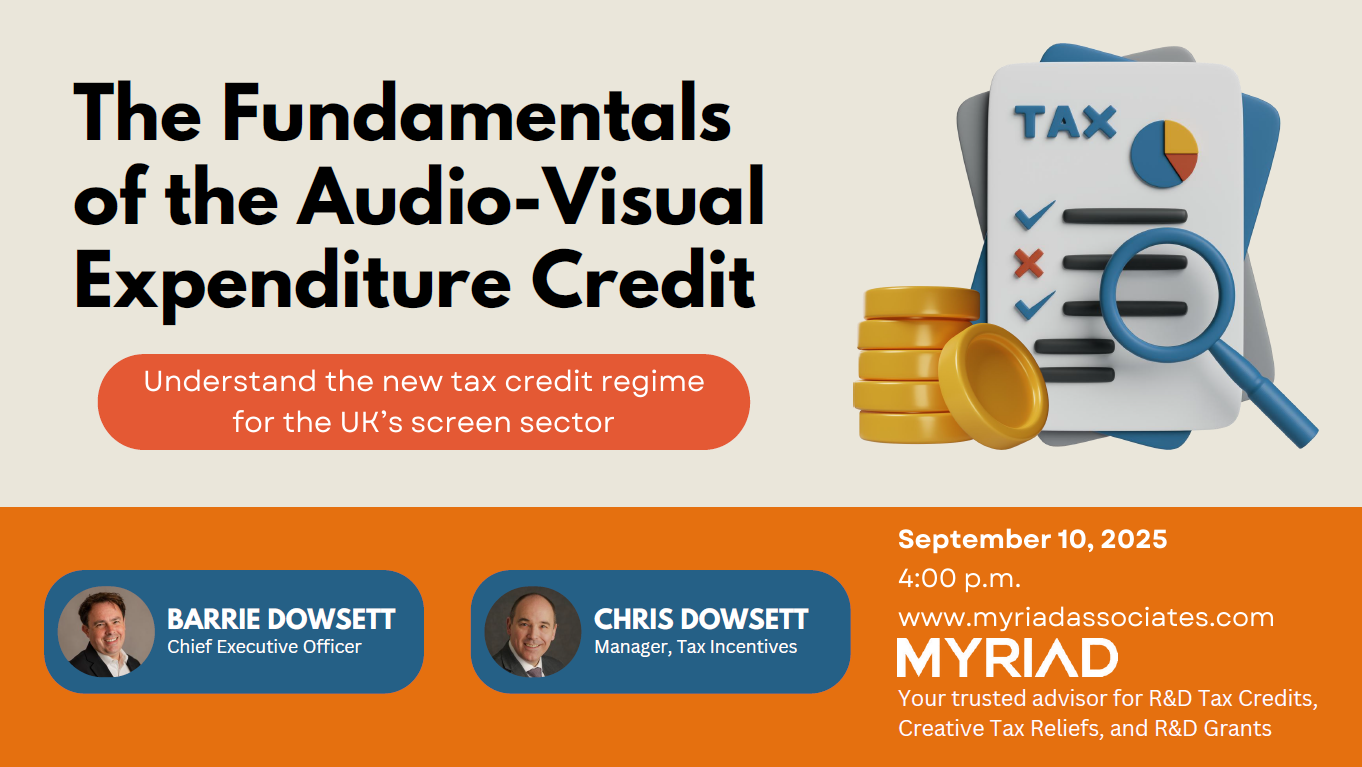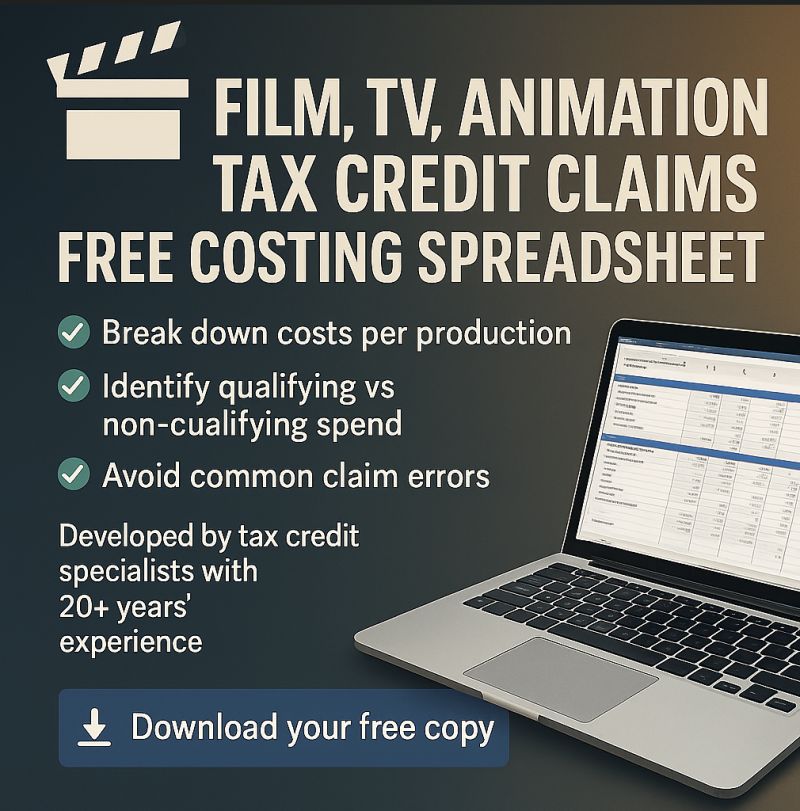Animation Tax Relief (ATR) is a government funding incentive to support animation programmes and is currently worth up to 20% of core production costs. ATR is managed by HMRC and claimed as part of the Company Tax Return.

Animation Tax Relief (ATR), is a creative industry tax relief incentive, funded by the UK government.
ATR supports UK animation production companies by offering them a tax rebate against the money they spend on the pre-production, principal photography (filming or final rendering) and post-production of an animation project.
ATR is a form of Television Tax Relief (TTR); all qualifying productions must be animated TV programmes.
As with TTR, ATR is being phased out and replaced by the Audio-Visual Expenditure Credit for expenditure incurred from 1 April 2024.


An animation production company can claim ATR on whichever is the lower:
If the production is profitable, Animation Tax Relief can be used to reduce a Corporation Tax bill with an enhanced deduction.
If the animation makes a loss, claimants can choose to surrender their losses at a rate of 25%. This means a company can receive up to 20% of their eligible costs back, in cash!
Animation Tax Relief is claimed as part of the Company Tax Return (CT600) filed with HMRC.
To make an ATR claim, you’ll need to have the following documents:
You’ll also need to keep hold of any evidence to show that your production qualifies and that all costs were paid.


To qualify for Animation Tax Relief, you need to meet the following criteria:
The tax reliefs for film, high-end TV programmes, children’s TV programmes and animations can claim the new Audio-Visual Expenditure Credit (AVEC) on expenditure incurred from 1 January 2024. You can claim the following expenditure credit rates:
Productions that begin principal photography on or after 1 April 2025 must use the AVEC scheme going forward. However, productions that begin principal photography before 1 April 2025 can continue using the former tax relief schemes until 31 March 2027.


In our AVEC eBook, we explain how you can make the most of this valuable government programme.
✅ Eligibility Made Clear: Understand the requirements to qualify for the Audio-Visual Expenditure Credit, including certification as a "British" production.
✅Claiming AVEC Simplified: Learn the step-by-step process of preparing an AVEC claim.
✅Breakdown of Qualifying Costs: Discover which phases of production—pre-production, principal photography, and post-production—are covered and how costs are apportioned.
Key topics we'll be covering include:


Simplify your Audio-Visual Expenditure Credit (AVEC) claim with Myriad’s AVEC costing by trade spreadsheet, a powerful, structured template designed to help you satisfy both BFI and HMRC cost reporting requirements.
Key topics we''ll be covering include:

Myriad is a leading innovation funding consultancy that employs Animation Tax Relief application specialists, qualified cost accountants and corporate tax experts.
Our specialist team has proven successful in delivering maximum claims for UK Animation companies.
About Myriad
An animation may include various techniques, which include but are not limited to:
Your animation will also need to qualify as a television programme.
An animation will not qualify for ATR if;
Each production must be treated as a separate trade for tax purposes, so you’ll need to create a profit and loss account for each production to report to HMRC. A company makes this election in its tax return by accounting for the production as a separate trade in its Corporation Tax computations.
TV programmes commissioned together are treated as one programme.
All productions must be certified as British. For the vast majority of cases, this means passing the Cultural Test as administered by the British Film Institute (BFI).
The only exception to this rule is for co-productions.
Official co-productions are a national film or TV programme in the United Kingdom under an agreement between the UK Government and any other government, international organisation or authority.
Co-producers don’t need to meet all the requirements of a standard production company; they only need to be considered co-producers officially and make an effective creative, technical and artistic contribution to the film or programme.
Qualifying co-productions can be considered ‘British’ under a different definition; they must have a minimum of 10% of the total core costs (across all partners) in the UK, but do not need to pass the BFI's Cultural Test.
In most cases, your production must be certified as British by passing the British Film Institute (BFI) cultural test.
To pass the BFI cultural test, complete an online application form for each production for which you want to claim ATR. BFI will assess your application and award points based on the cultural content of the production, its cultural contribution, its cultural hubs, and its cultural practitioners.
You will need to achieve 16 of a possible 31 points to pass.
Myriad employs BFI application specialists who can help you pass this test. Contact us for advice.
BFI is currently reporting 8-10 weeks to process submitted applications.
Delays may occur if application forms are not correctly completed or need further information. If you need the certificate by a specific date, make sure you apply in good time and specify your deadline date on the application.
A Letter of Comfort: If you’re not yet ready to complete a cultural test application, you can submit a draft application and receive a Letter of Comfort from the BFI. This letter will state that the production should pass the cultural test. A Letter of Comfort can’t be used to submit an ATR claim to HMRC, but it is reassuring to have and can help you secure financing.
An Interim Certificate: You can apply for an Interim Certificate if your production is not yet finished. An Interim Certificate will be issued once the BFI and the Department of Culture, Media and Sport (DCMS) are satisfied that your production will pass the cultural test based on the proposals set out in your application.
A Final Certificate: A final certificate proving your production is British will only be issued after it is finished and ready for release. Therefore, applications for a final certificate should not be submitted before the production has been completed.
The Accountant's Report is required when an application claims points in Section C and/or Section D.
The Accountant's report aims to verify the total and UK expenditure of the work in Section C and the nationality or residence of all persons in Section D.
The Accountant's Report must be prepared by a person eligible for appointment as a company auditor under section 1212 of the Companies Act 2006.
A report can cost between £500 and £2,000 per application, depending on the production costs and the number of applications you submit.
The BFI cultural test regulations require you to make a statutory declaration which states that the information you’ve given in your application is accurate.
A statutory declaration is required for both the Interim and Final certifications.
The statutory declaration must be made before a practising solicitor, general notary, Justice of the Peace or an officer authorised by law to administer a statutory declaration under the Statutory Declaration Act 1835.
You can apply for both Animation Tax Relief and R&D Tax Credits. However, you may only claim a given project cost against one of these schemes, not both.
In some instances, you can maximise your overall tax relief by applying to both schemes and claiming specific costs against each scheme on a project-by-project basis.
Myriad can help you with this. To maximise your tax relief, we’ll study your projects, assess your costs and establish which project costs to claim under which scheme.
There are four phases of development in a production:
Activity between development and commercialisation are (largely) eligible core costs.
The key to when core costs can be claimed is knowing when the project was “green-lit”. Development activity is usually undertaken to determine whether the production is commercially feasible. Any expenditure in this stage is speculative in nature.
Expenditure can be claimed once it is clear that the production will go ahead. Some production companies may have done very little conceptual development before production, and some may have spent more time assessing its commercial viability.
Commercialisation activities are no longer eligible, even though they may be crucial to a production's success; they are activities following when a production could be released to the public.
Non-core animation programme expenditure relates to initial design stage activities or commercial exploitation of the production.
For example, initial concept artwork used to establish commercial viability is not a core expenditure and is not eligible for ATR. Marketing an animation programme is also considered a non-core expenditure.
Additional ineligible expenditures include entertaining, publicity, promotion, audit fees, interest, completion bonds and other forms of insurance.
Where an animation programme is partly produced in the UK and partly outside of the UK, it will follow that some goods and services may be non-UK. In such cases, it will be necessary to apportion the relevant core expenditure between UK and non-UK expenditure.
This applies in the case of goods and services provided throughout core expenditure stages.
The apportionment method is not fixed and can be determined on a case-by-case basis. The key criterion is that it must be done fairly and reasonably.
There will often be more than one ‘fair and reasonable’ basis. The requirement is not that the apportionment must be made using the fairest and most reasonable basis but simply that it must be made fairly and reasonably.
If you’d like to discuss your options for apportioning your costs, get in touch with the team.